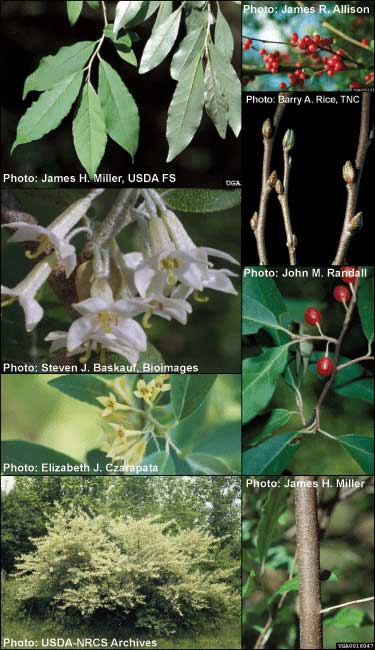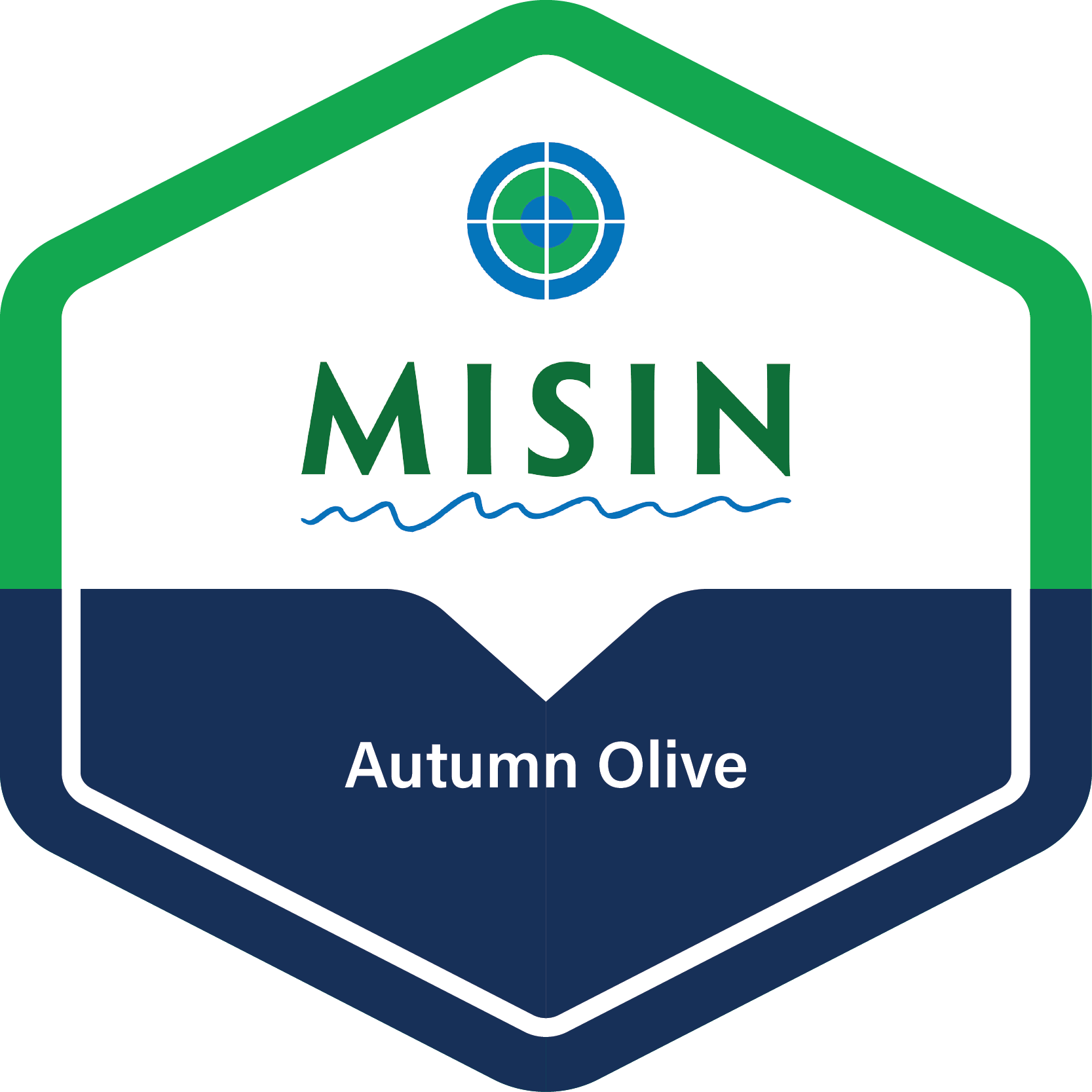Autumn olive (Elaeagnus umbellata)
 Common Names: Oleaster, Silverberry
Common Names: Oleaster, SilverberryDescription: Invades disturbed areas, can out-compete native species; increases nitrogen levels to the detriment of native communities; had been widely recommended for conservation planting until invasive traits became apparent.
Habit: Deciduous shrub or small tree growing up to 6 m (20 ft) in height and 9 m (30 ft) wide.
Leaves: Simple, alternate, oval, 5-10 cm (2-4 in) long, margins entire and wavy, gray-green above, silvery scaly below; early leaf out (mid-March).
Stems: Often thorny; silvery or golden brown; brownish scales give stems a speckled appearance.
Flowers: Fragrant, tubular, 4 petals and stamens, cream to light yellow in color, borne in clusters of 1-8; bloom from April through June.
Fruit and seeds: Drupe, 0.6 cm (0.25 in), silvery with brown scales when immature, speckled red or yellow when mature; ripen September to October, begin to bear fruit at 3 to 5 years, each tree can produce 2-8 lbs. of seed per year, fruit eaten and seed dispersed by birds.
Habitat: Shade tolerant; occurs in a variety of soil types (pH range of 4.8-6.5), thrives on infertile soils because of nitrogen-fixing root nodules; found in open woods, forest edges, roadsides, fence rows, meadows, sand dunes, and other disturbed areas.
Reproduction: Primarily by seed, also by stump & root sprouting.
Similar species: Native silver-berry (E. commutata) has opposite leaves; non-native Russian olive (E. angustifolia) has longer, narrower, leaves, silver above and below.
Monitoring and rapid response: Monitor sunny open sites; autumn olive leafs out early in spring, retains leaves in fall, can be recognized year-round. Hand pull seedlings; focus on newest infestations and highest quality areas first; Cutting, girdling and burning are ineffective without herbicide as they stimulate sprouting; basal bark/stem sprays effective in late spring, possibly in fall; basal stem injection of herbicide on dormant plants provides excellent control with low concentrations of herbicide. This species is difficult to control, research control options thoroughly. Credits: The Michigan Natural Features Inventory (MNFI) has partnered with MISIN to provide the information in this fact sheet. Species images and/or information were used with permission from "A Field Identification Guide to Invasive Plants in Michigan's Natural Communities" and "A Field Guide to Invasive Plants of Aquatic and Wetland Habitats for Michigan.
Common Name: | Autumn olive |
Scientific Name: | Elaeagnus umbellata |
Family: | Elaeagnaceae (Oleaster) |
Duration: | Perennial |
Habit: | Shrubs |
USDA Symbol: | ELUM |
 View Species Course |
|
